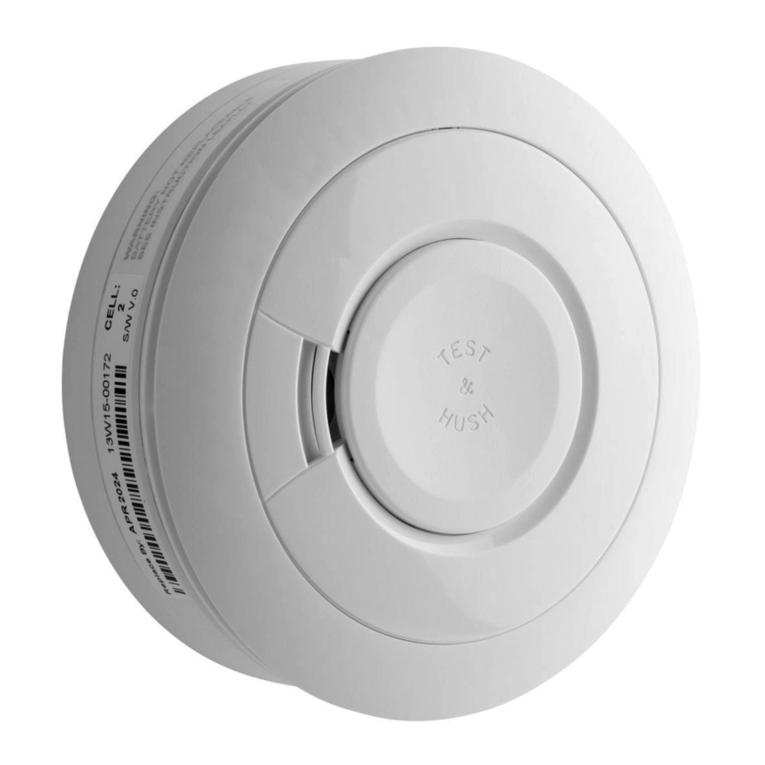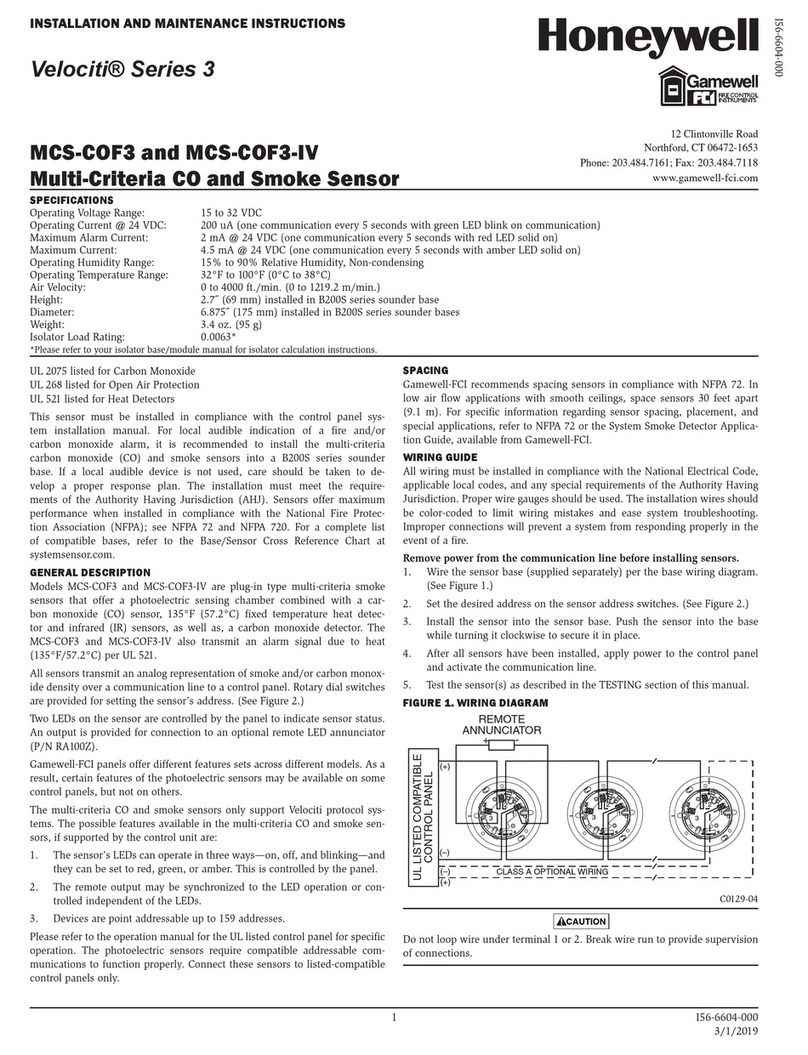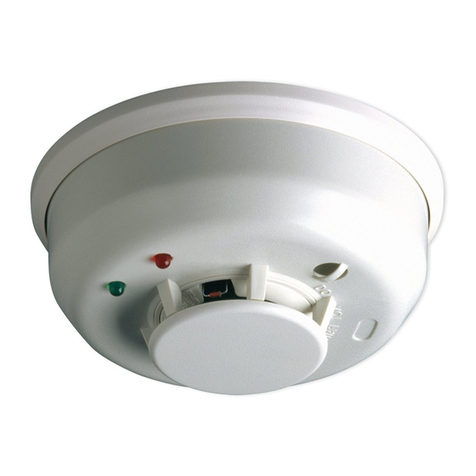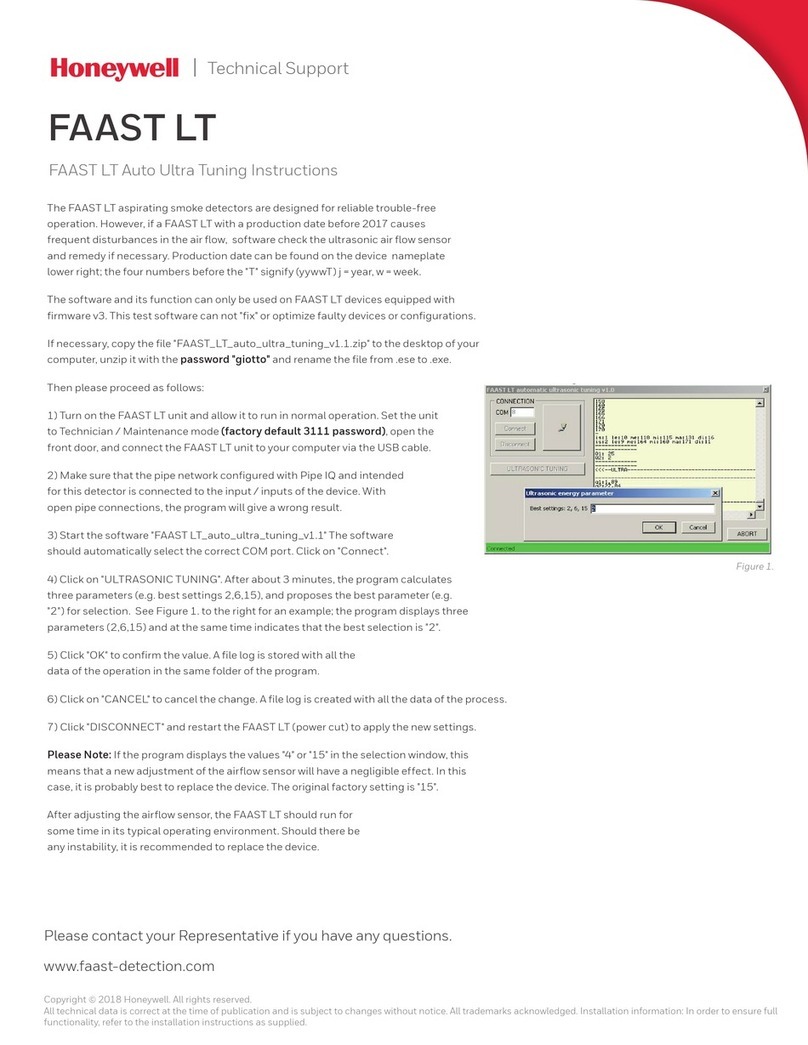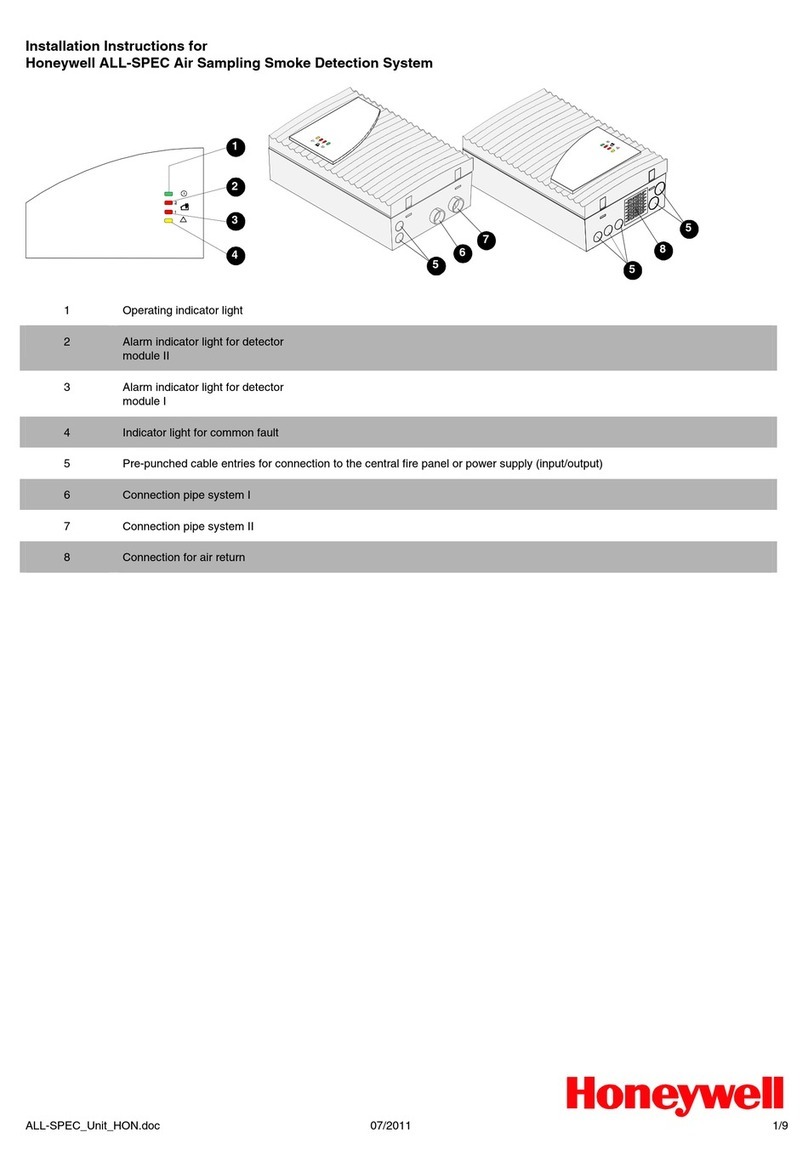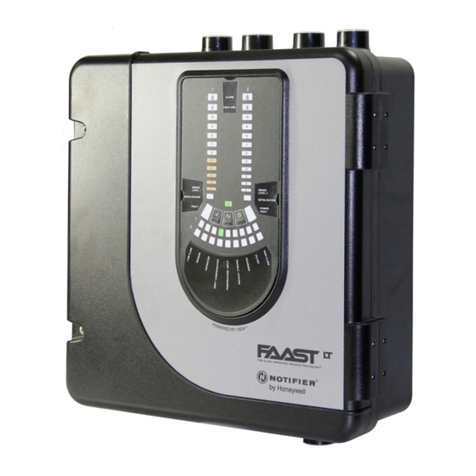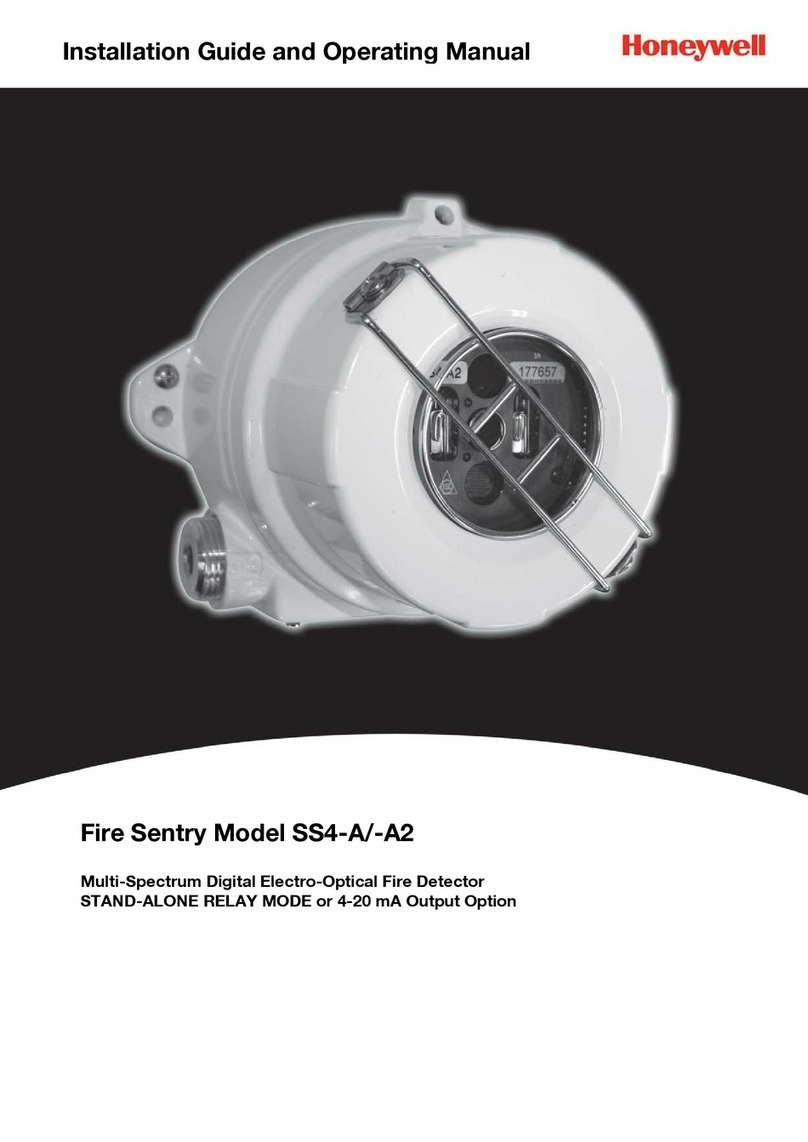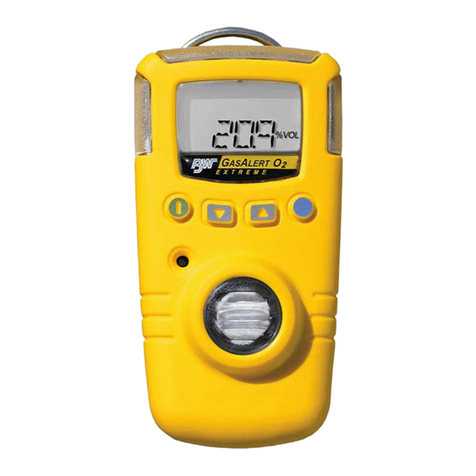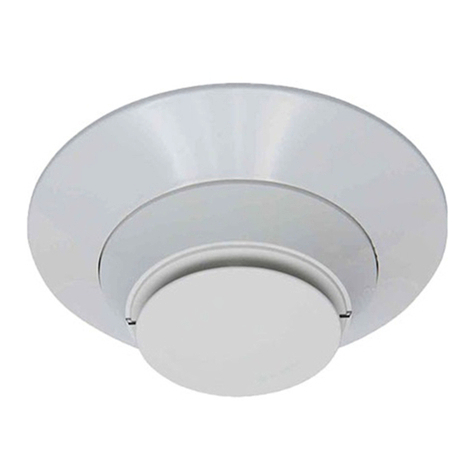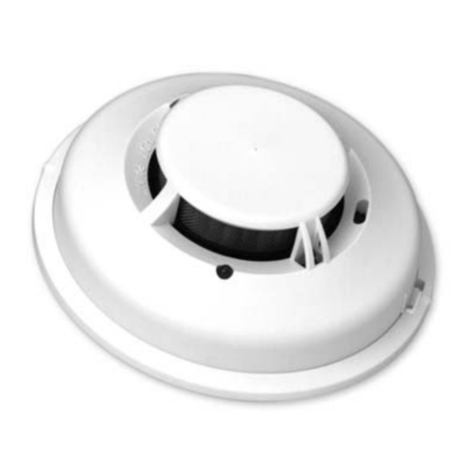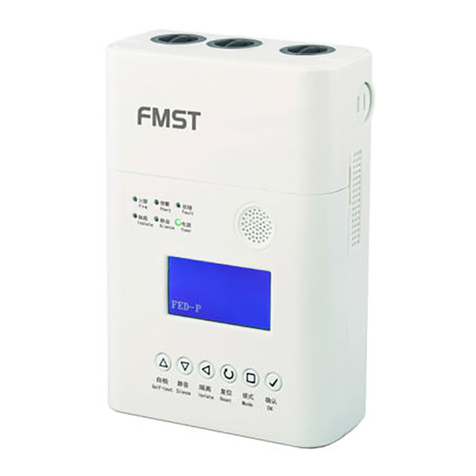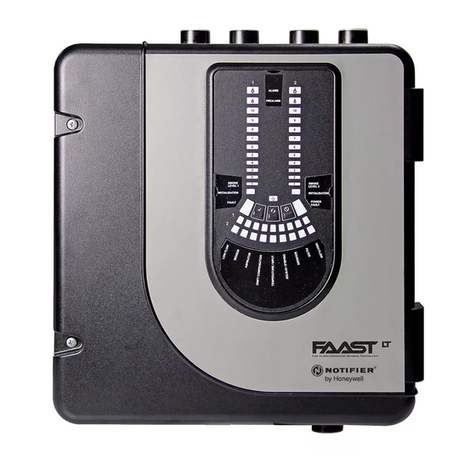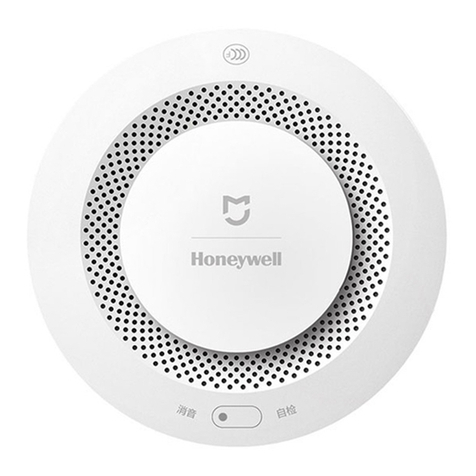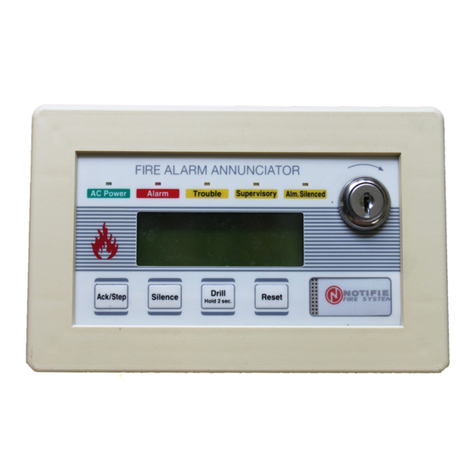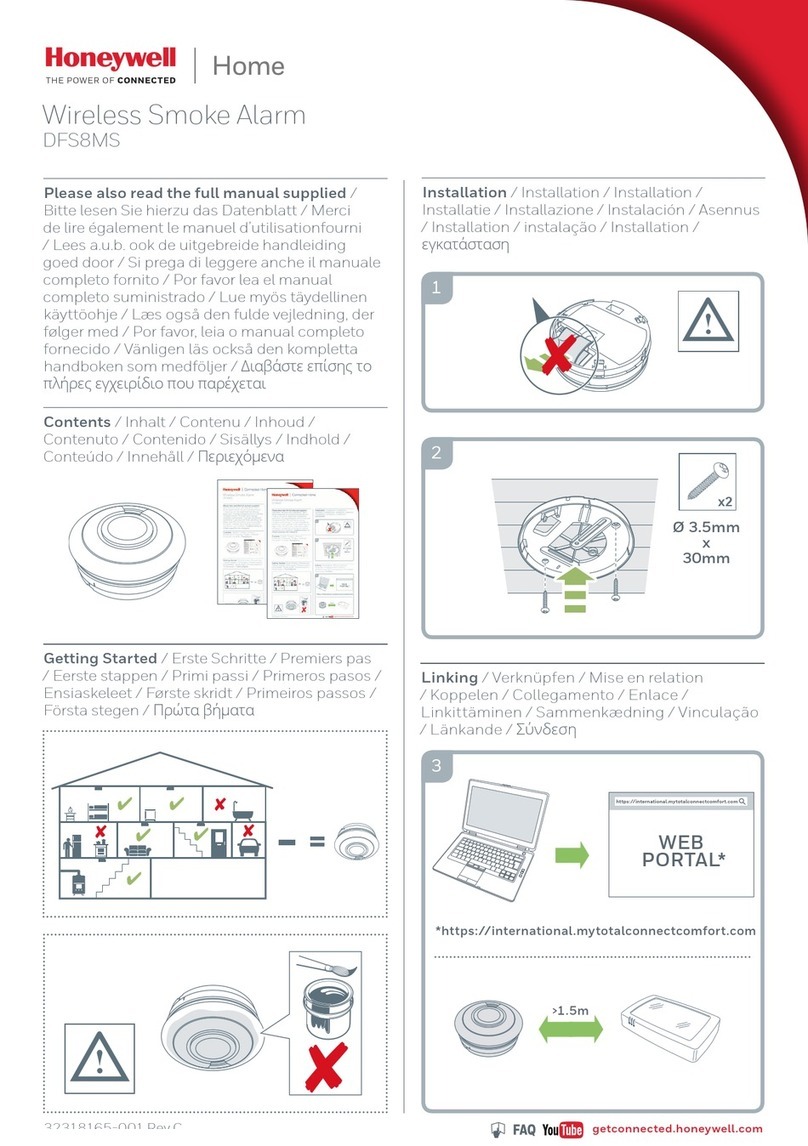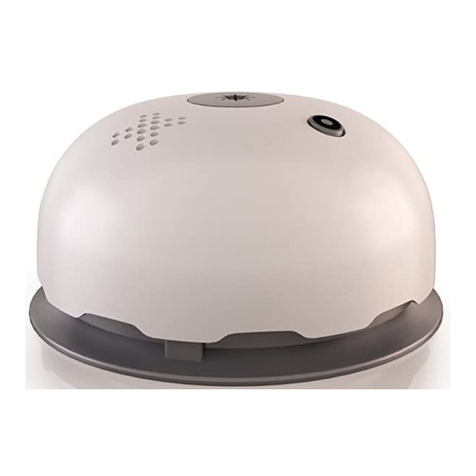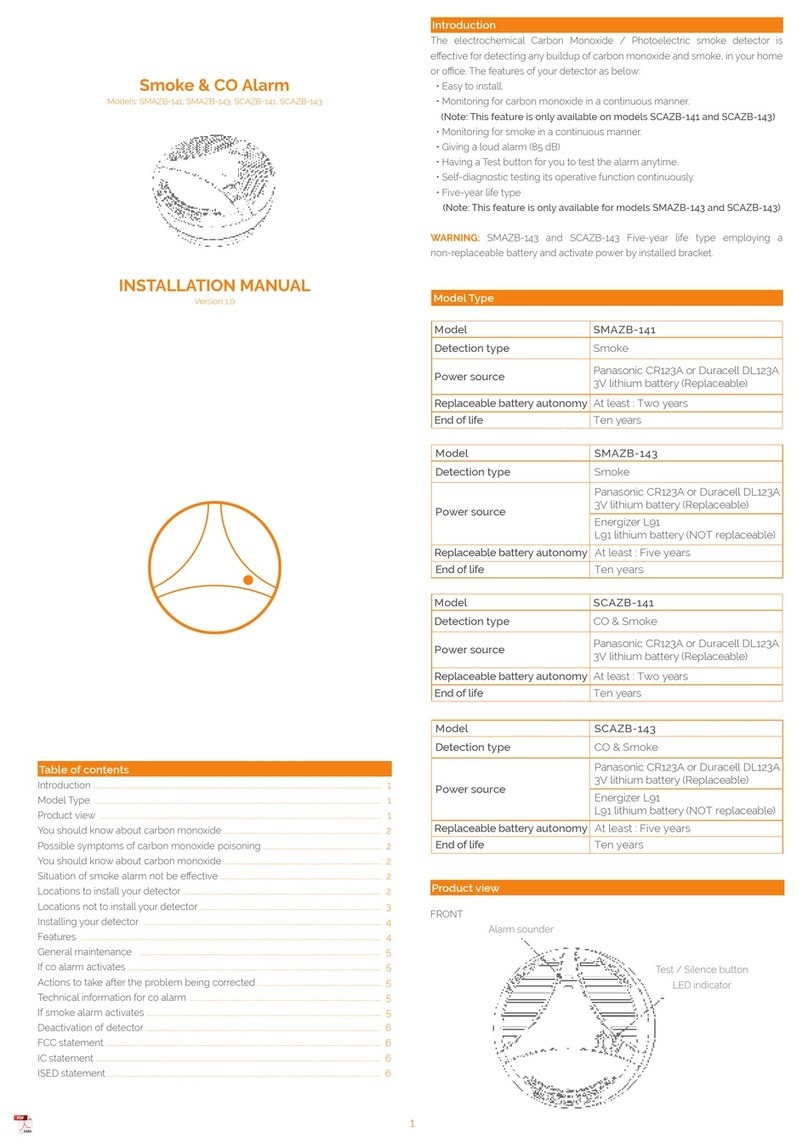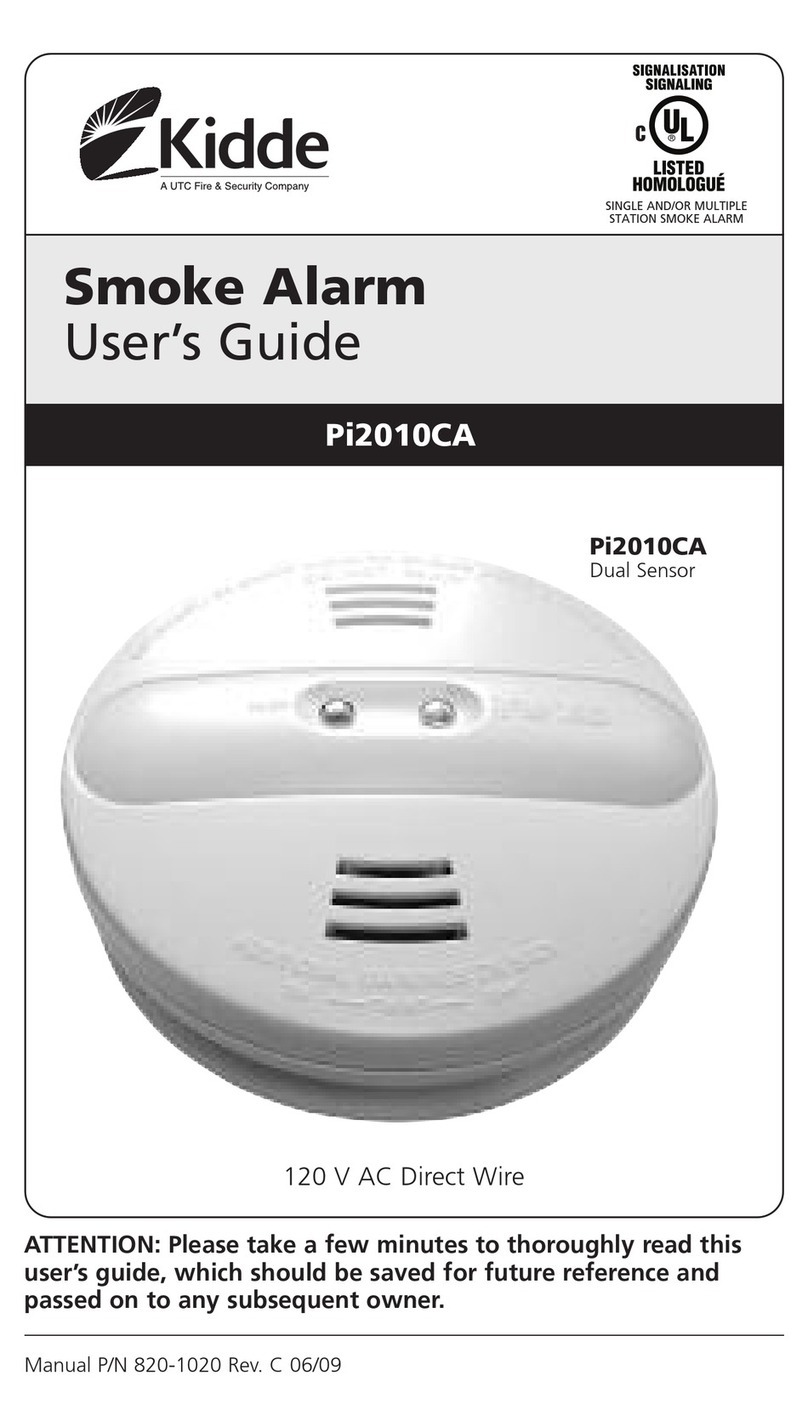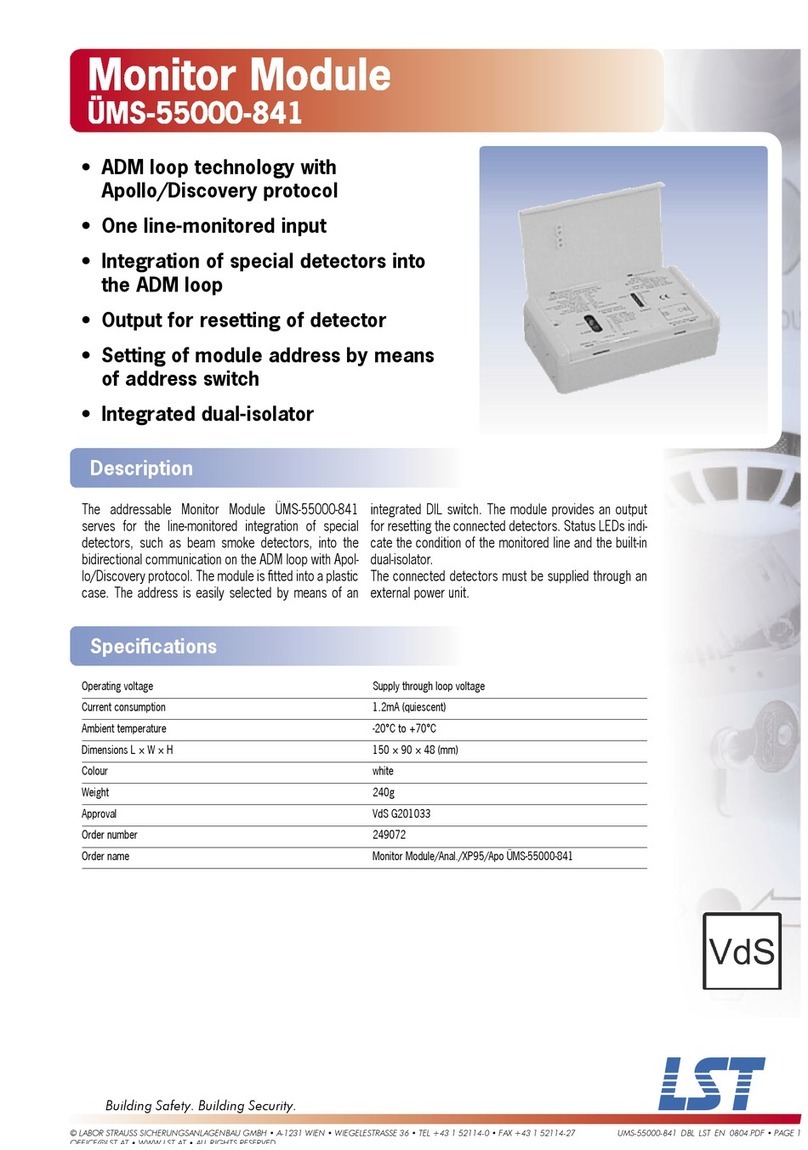
General Information
Before installing detectors, please thoroughly read these installation
instructions and Guide for Proper Use of System Smoke Detectors
(A05-1003-002), which provides detailed information on detector
spacing, placement, zoning, wiring, and special applications. Copies
of this manual are available from Honeywell.
NOTICE: This manual should be left with the owner/user of
this equipment.
IMPORTANT: This detector must be tested and maintained regularly
following NFPA 72 requirements. The detector should be cleaned at
least once a year.
General Description
The 5806W3 photoelectronic smoke detector with built-in wireless
transmitter is intended for use with wireless alarm systems that
support 5800 series devices. Refer to control/communicator installation
instructions for compatibility. The 5806W3 smoke detector can be
used with any 5800 series wireless receiver/transceiver for residential
installations. For commercial installations, the 5881ENHC or
the 5883H receiver is required. The transmitter can send alarm,
tamper, maintenance (when control panels are equipped to process
maintenance signals), and battery condition messages to the system’s
receiver. The maintenance signal fully complies with the sensitivity
test requirement specified in NFPA 72, 7-2.2 and is approved by UL.
Refer to the wireless system’s instructions for the maximum number
of transmitters that can be supported.
The 5806W3 incorporates a state-of-the-art optical sensing chamber
and an advanced microprocessor. The microprocessor allows the
detector to automatically maintain proper operation at factory
calibrated detection levels, even when sensitivity is altered due to the
presence of contaminants settling into the unit’s smoke chamber. In
order for this feature to work properly, the chamber must never be
opened while power is applied to the smoke detector. This includes
cleaning, maintenance or screen replacement.
The 5806W3 contains a piezoelectric horn which generates the ANSI
S3.41 temporal pattern in an alarm condition. In alarm, a message is
also sent to the wireless control panel and the smoke detector’s zone
number is displayed at the console. The alarm message is transmitted
every 4 seconds until the smoke condition has cleared and the
detector has reset. During an alarm condition, pressing the detector’s
test switch will silence the piezoelectric horn for 5 minutes. Once
the detector has reset, a RESTORE message is transmitted to the
control panel and the transmitter’s zone number can be cleared from
the panel. The built-in Drift Compensation algorithm automatically
maintains the sensitivity of the detector. Once the detector reaches its
limit of compensation, it transmits a maintenance signal to the panel.
The mounting base installation is simplified by the incorporation of
features compatible with drywall fasteners or other methods that
provide a method for securing the detector in place.
5806W3 Photoelectronic Smoke Detector
with Built-in Wireless Transmitter
INSTALLATION AND SETUP GUIDE
I56-3022-004R
Two LEDs and a sounder on the detector provide local visual and
audible indication of the detector’s status:
Table 1: Detector LED Modes
Green LED Red LED Piezoelectric
Horn
Power Up Blinks every
5 sec
Blinks every
5 sec Off
Normal (standby) Blinks every
10 sec Off Off
Out of Sensitivity Off Blinks every
5 sec Off
Smoke Alarm Off Blinks every
1 sec Temporal Pattern
Low Battery Off Blinks every
45 sec
Chirp every 45
sec after LED
blinks for 7 days
During initial power-up, the red and green LEDs will blink
synchronously once every 5 seconds. It will take approximately 20
seconds for the detector to finish the power-up cycle (see Table 1).
After power-up has completed and the detector is functioning normally
within its listed sensitivity range, the green LED blinks once every
10 seconds. If the detector is in need of maintenance because its
sensitivity has shifted outside the listed limits, the red LED blinks
once every 5 seconds. When alarm has been activated by smoke, the
red LED blinks every 1 second. The LED indication must not be used
in place of the tests specified under Testing. If the detector senses a
low battery condition, the red LED blinks once every 45 seconds.
To measure the detector’s sensitivity, the i3 Series Model SENS-RDR
Infrared Sensitivity Reader tool (see Figure 4) should be used. Refer to
instruction manual D100-98-00 for proper use of the SENS-RDR.
Low Battery Detection
The 5806W3 is powered by a single 3-volt CR123A or DL123A Lithium
battery (included). The detector checks for a low battery at least
every 65 minutes. If a low battery is detected, the transmitter sends
a low battery message to the control panel, which beeps and displays
the detector’s zone number. In addition, the red LED of the 5806W3
will blink every 45 seconds and the test switch will be disabled. This
condition will exist for a minimum of 7 days, and then the detector’s
horn will “chirp” about every 45 seconds. Pressing the test switch
during this time will silence the chirps for 12 hours. The battery
should be replaced BEFORE the chirps begin. Be sure to replace the
battery with a fresh one.
- 1 -

